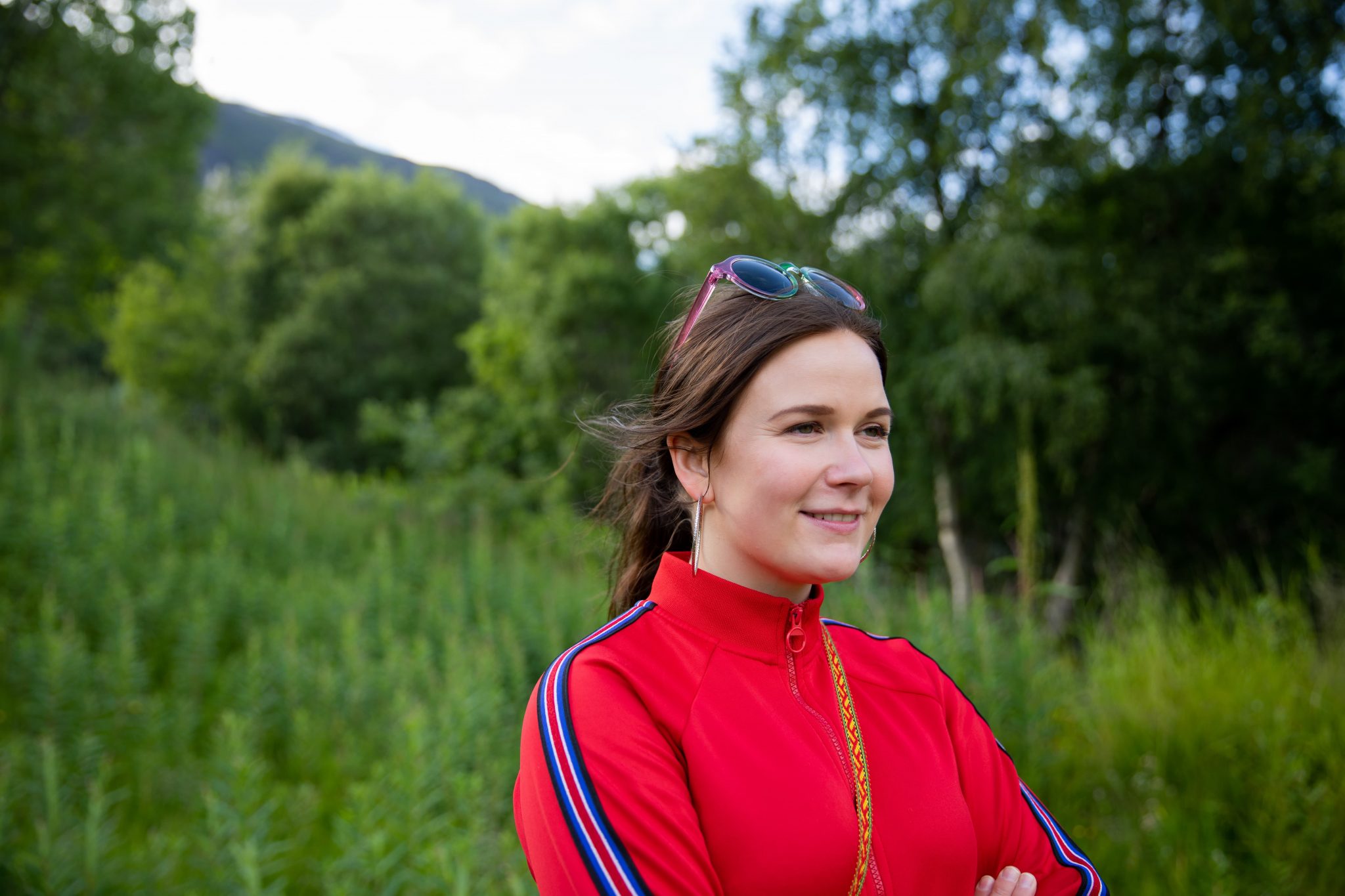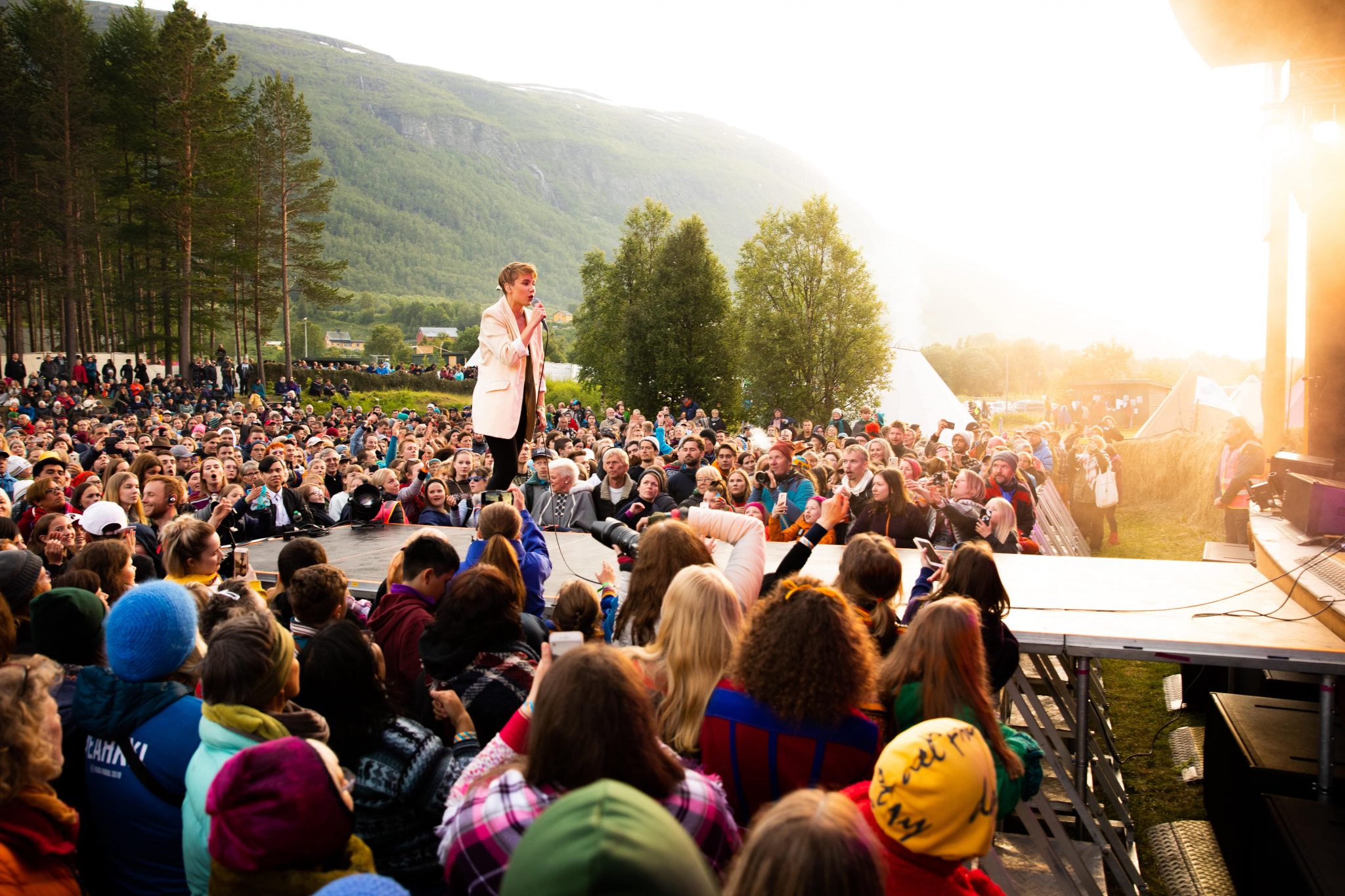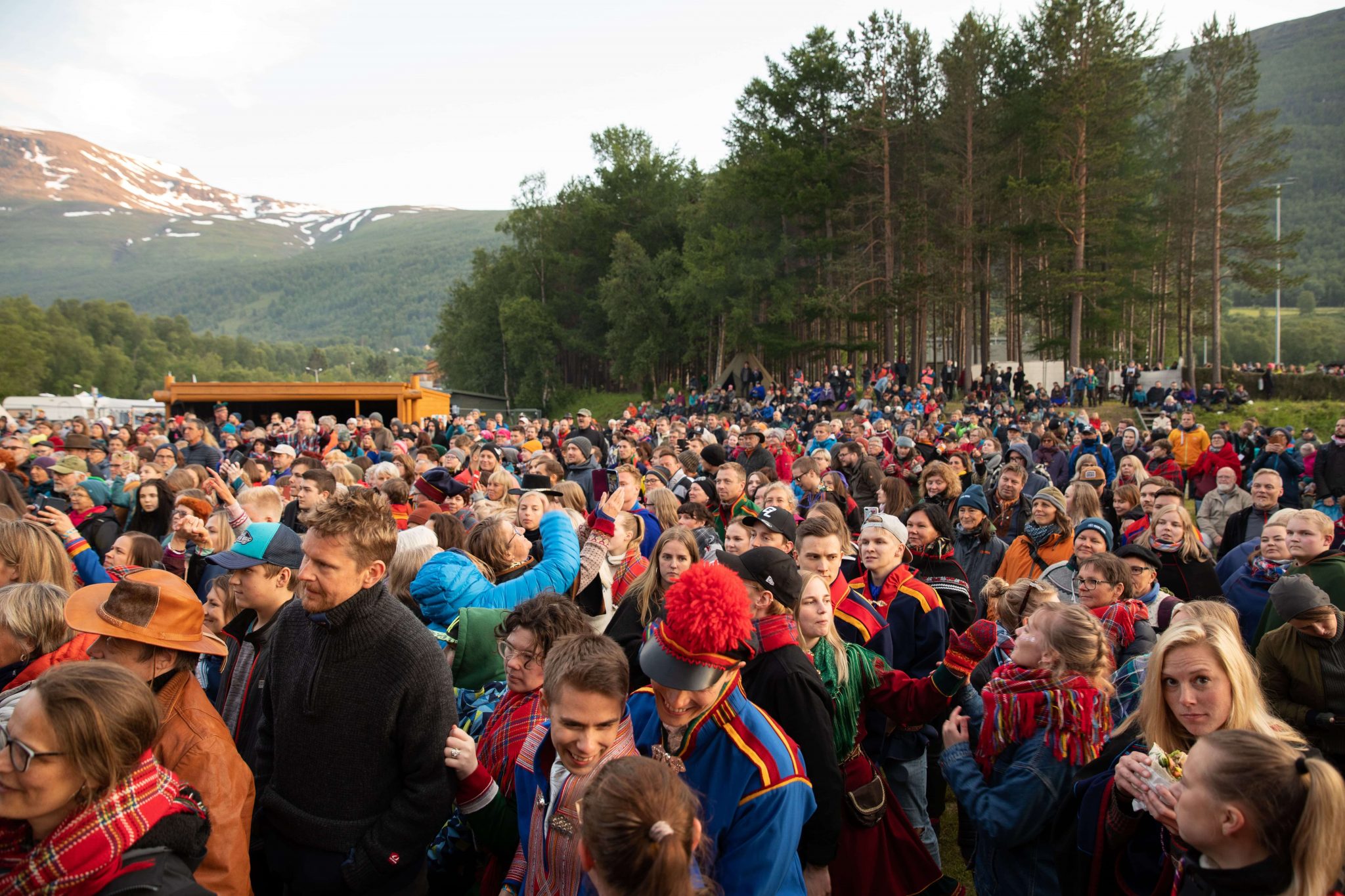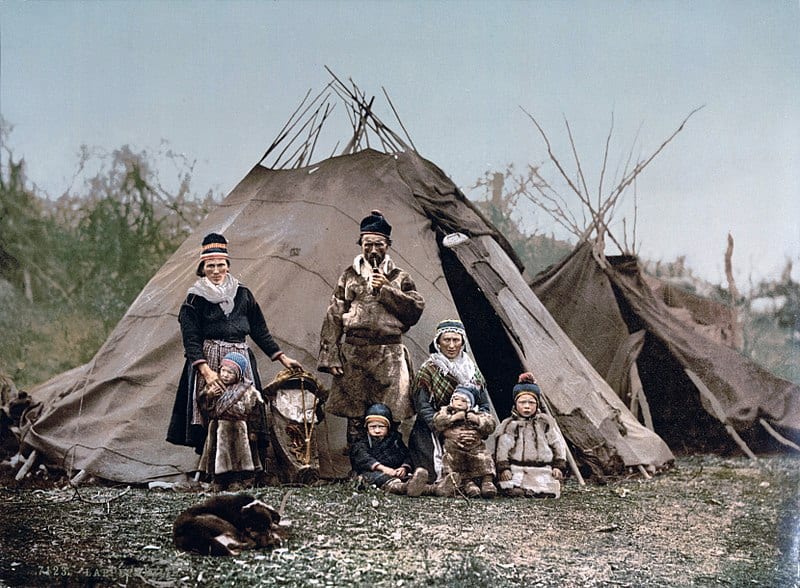The Saami people are 1 group of indigenous people connected by a 400,000km2 stretch of land traditionally called Sápmi, spread out over (what is now called as the countries of) Norway, Sweden, Finland and Russia. Popularly known as reindeer herders, a big part of the Saami population has migrated as nomads between the arctics and the rest of northern Europe for many centuries. However, reindeer herding is not what defines the Saami as a people.
So what does define the Saami as a people? Spread out over such a big country, the Saami have very different cultural forms of expression, they speak 11 different dialects and many Saami do not live as reindeer herders, but as well skilled fishermen or subsistence farmers. In fact, only 10% of Saami today still own reindeer, the rest has either given up on their traditional lifestyle or live on the coast, in which case they are called ‘coastal Saami’. Many of these coastal Saami are living by the acrtic fjords of Norway, in connection with the sea life. Each year since 1991, in one specific town of the region of Troms, Saami from all over Sápmi gather for 4 days in the summer to celebrate their unity in cultural diversity, and Sinchi was there this year to experience it.
The annual gathering is called ‘Riddu Riddu‘; coastal Saami for ‘small storm by the coast’, and with good reason. It is a beautiful sight to see, all those Saami from different parts of Sápmi in their traditional dress, with each their own design and colours. But it hasn’t always been this way. For 150 years, the Saami from Norway and other countries in Scandinavia, weren’t allowed to wear their gákti (= traditional dress). The authorities of Norway, Sweden, Finland and Russia each had their own efforts to assimilate Saami people into their respective dominant cultures, in an attempt to phase out their languages, their traditional dress, their music, and even their land. Ultimately, many Saami left their traditional ways of living for a life in the city, out of fear for drastic measures and unequal treatment for their children en grandchildren. During the second world war, the assimilation politics gained strong momentum at the expense of the Saami people, when local governments burnt down entire Saami villages to impose their ‘Norwegian-ness’ upon them. Despite many Saami still living under the radar today, more and more have re-claimed their identity in the ’90s and 2000’s and the Riddu Riddu festival in Manndalen plays an important role in these developments. Hence the name ‘small storm by the coast.’
Back when Riddu Riddu was founded, not everybody was as happy to see all the Saami return to their rightful land. In the museum for Northern People, which is located at the festival site, there is a traffic sign for the valley where the festival takes place, with bullet holes in the Saami name. These traffic signs had to be put back up by the Norwegian government many times after vandalisation in the beginning of the ’90s. Eventhough the Norwegian government has since declared the Saami a soevereign people, political efforts won’t wipe away underlying systems of exclusion, suppression and 150 years of unequal treatment just like that. This vandalized traffic sign is still on display as a reminder of such events, and the sentiments caused by discrimination run visibly deep within the Saami community. But does that mean that the Saami from all over Sápmi feel connected through their struggles? Probably yes, but even more so, they feel increasingly connected through their efforts for reconciliation.
Most of our time at Riddu Riddu, we spent talking to different Saami from different areas of Sápmi (and different generations) and one specific topic kept coming up: the Saami languages. 24- year old Saami poet Ánná Káisá Partapuoli comes from a reindeer herding family and she explains to us the significance of her parents teaching her the local language:
” I think the most important struggle is that we keep the language, because if we keep the language, we remain as a people.”
Ánná Kaisa performed at the Centre for Northern People during the festival with her performance ‘We didn’t cross the border, the border crossed us.’ The performance is a combination of video art and live poetry and offers a very refreshing take on a seemingly ‘boring’ topic as language and culture, in an attempt to reach younger Saami people. Ánná made a very conscious choice by doing so, as many younger Saami were never taught their native language, and she hopes more and more will start learning.
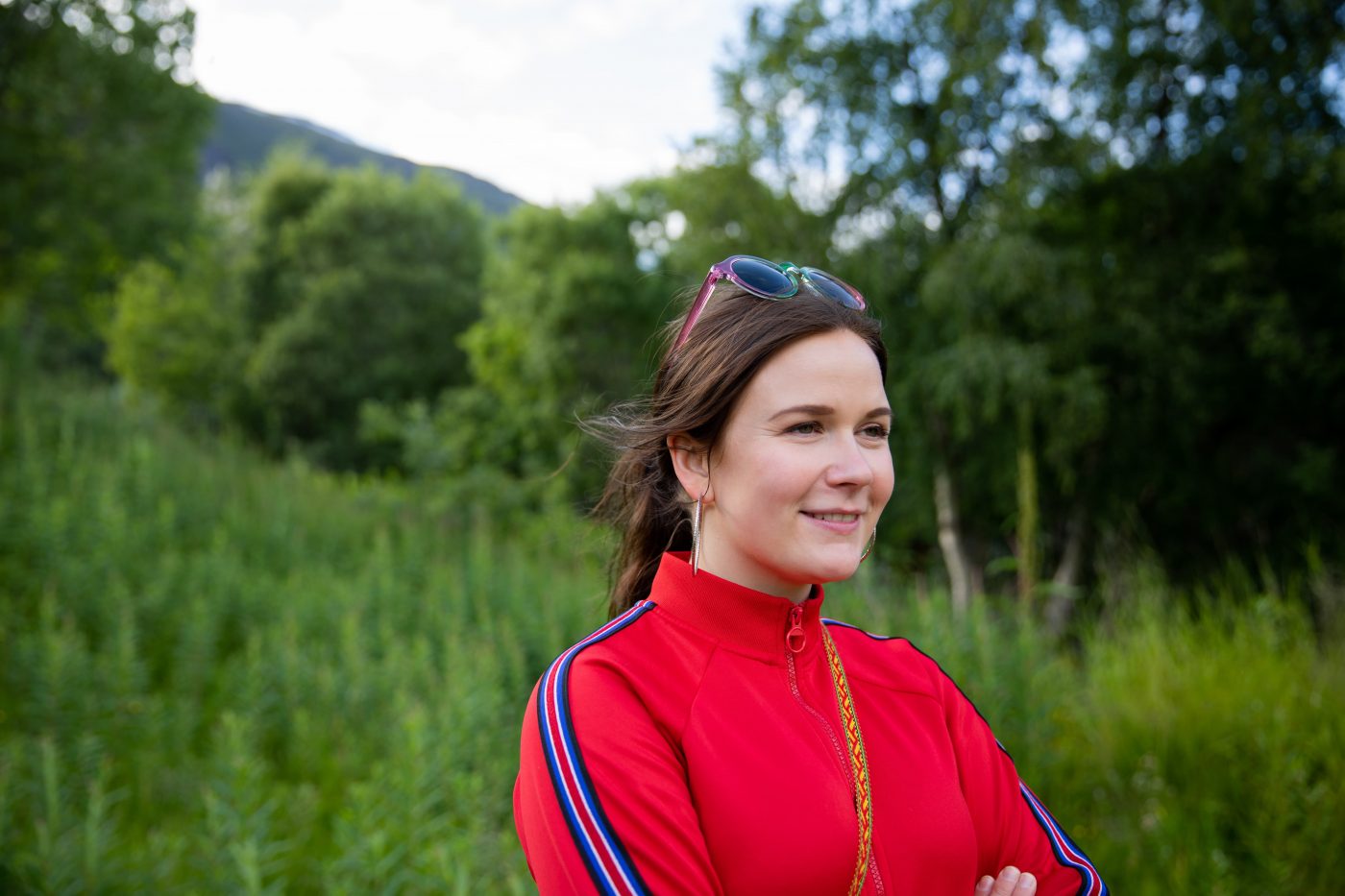
Ánná Káisá Partapuoli is a reindeer herding Saami and one of the participants on the Saami written language and literature program to encourage young Saami to learn their own written language. Ánná Káisá is 24 years old and won the 2018 Nords Kulturpris (Culture Award) for her poetry slams in Saami language. At this years’ Riddu Riddu festival, she introduced a new performance concept where she combined video-art with poetry. Photo taken by Sinchi Photographer Mike van Kruchten
The prospects for Saami languages are looking very good, as we later learnt in a conversation with two Saami language teachers from the Arctic University of Tromso, UiT. Borre Gaup and Lene Antonson have their own flagship tent on the festival terrain, helping people install Saami language apps into their phones and laptops. Borre explains how their team has developed their own infrastructure for Saami language tools, like online dictionaries and translation tools, to make minority languages more accessible. And not only does this Saami language infrastructure create accessibility for people to learn the different Saami languages, it’s also a way to introduce Saami written language to those Saami who only speak their language, but don’t know how to write.
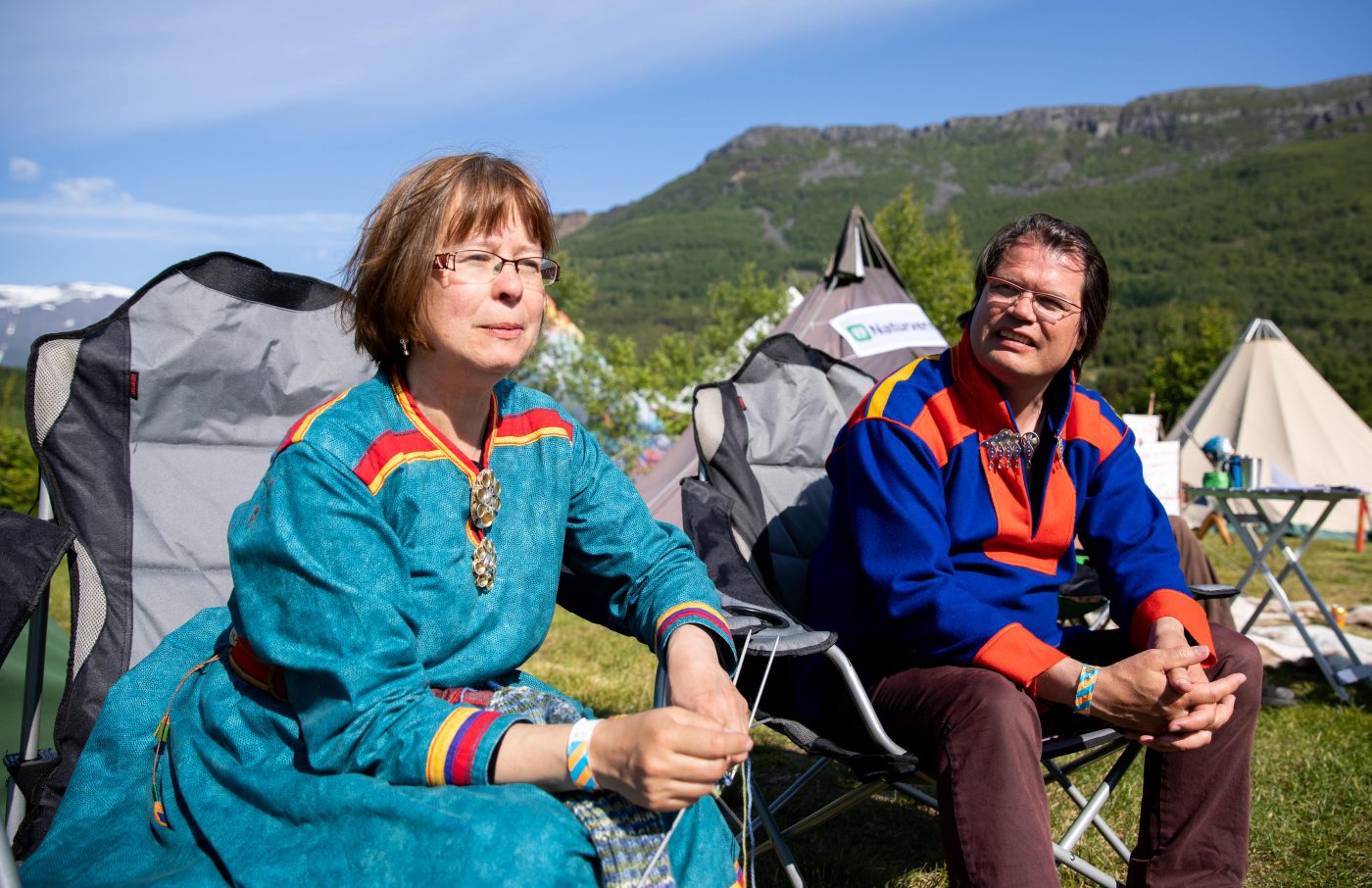
Lene Antonsen and Borre Gaup are both affiliated with the UiT (Arctic Univeristy of Tromso, Norway) and are here at the Riddu to tell people about the Saami characters keyboard they have made for mobile phones and the translation tools such as online dictionaries and grammar checks; helping whomever might be interested to download the apps on their phone. The platform they’ve built is now also being used by other minority languages, which are not commonly represented in online translation tools. We were very impressed by their work and happy to listen to their story. Also, it so happened that Lene is the mother of the festival director and she is one of the first generation involved in the organization of Riddu Riddu. Photo taken by Sinchi Photographer Mike van Kruchten
“Saami languages are very old, but we put our language into writing only 40 years ago”, says head of the Saami writers’ union Inga Ravna Eira. Ravna Eira is also the initiator of the Saami written language and literature program, financed by the Saami parliament. The purpose of the program is to teach young Saami writers and poets like Ánná Kaisa, who has also participated in the program, this relatively young written language and encourage them to start publishing in Saami. According to Ravna Eira, it is very important to spread the Saami written language because it speeds up the process of reclaiming and passing down Saami cultural heritage to future generations. And not just that:
” When you learn a language you are included in that particular culture and you come to understand that culture.“
For example, Ravna Eira tells us how the Saami have 400 different expressions for snow and ice, which says a lot about the nature of the culture and Saami identity, what they depend upon and what cultural doors open up when you learn these 400 different expressions.
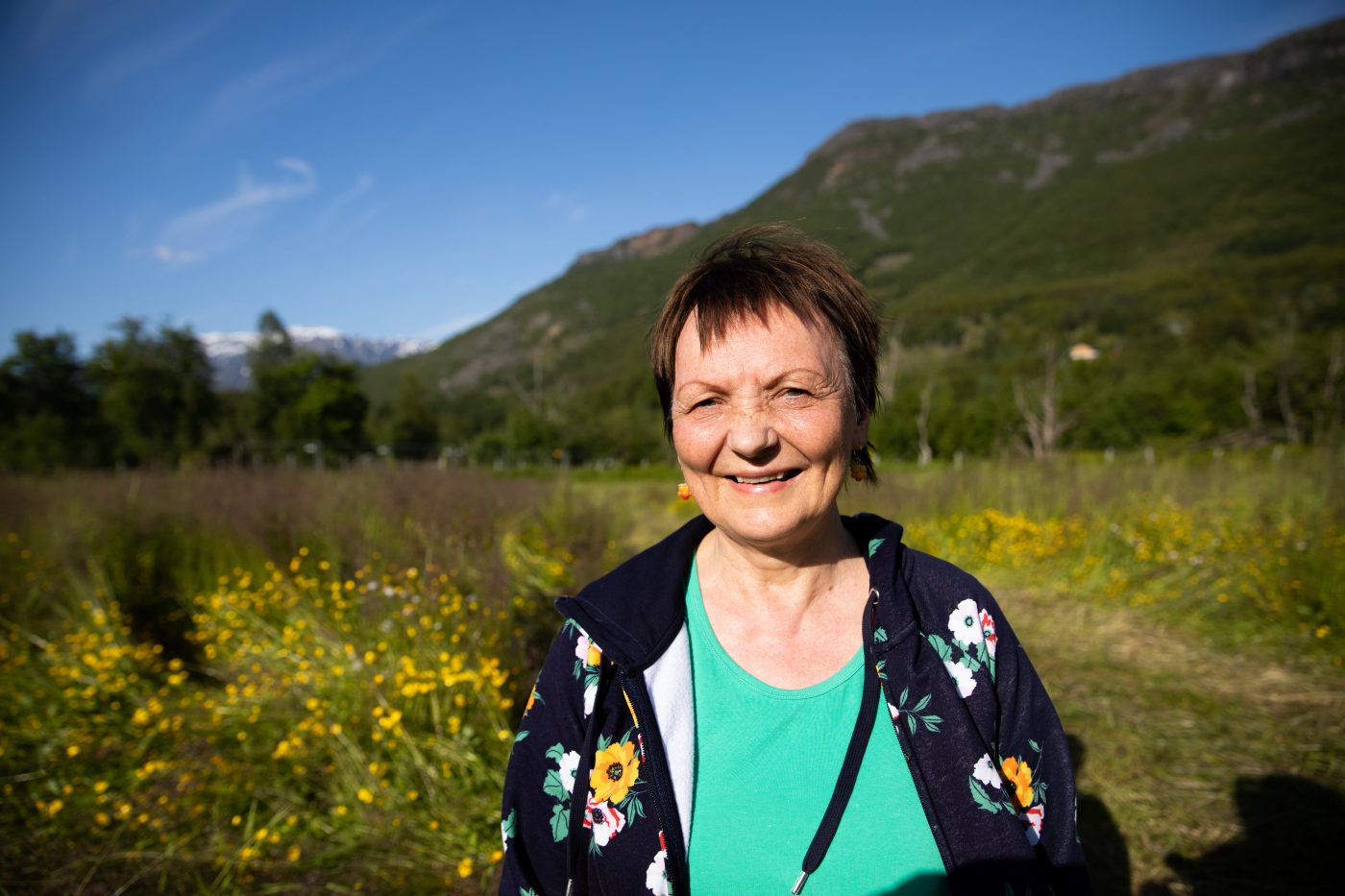
This is Inga Ravna Eira, traditionally a reindeer herder from Sapmi, joiker and head of the Saami writers union. She explained to us that, despite being Saami and Speaking Saami, she had to come to Oslo to learn her own written language. Not many Saami write or even speak the language. Nowadays, Inga only writes her (children)books in Saami because she wants to encourage other Saami to learn the written language. She also created a Saami language and literature program for young Saami to express their artistic nature in their indigenous language. Photo taken by Sinchi Photographer Mike van Kruchten
More to follow in our next update…
Check out our project page for more photos and stories: https://sinchi-foundation.com/projects/riddu-riddu-norway/
